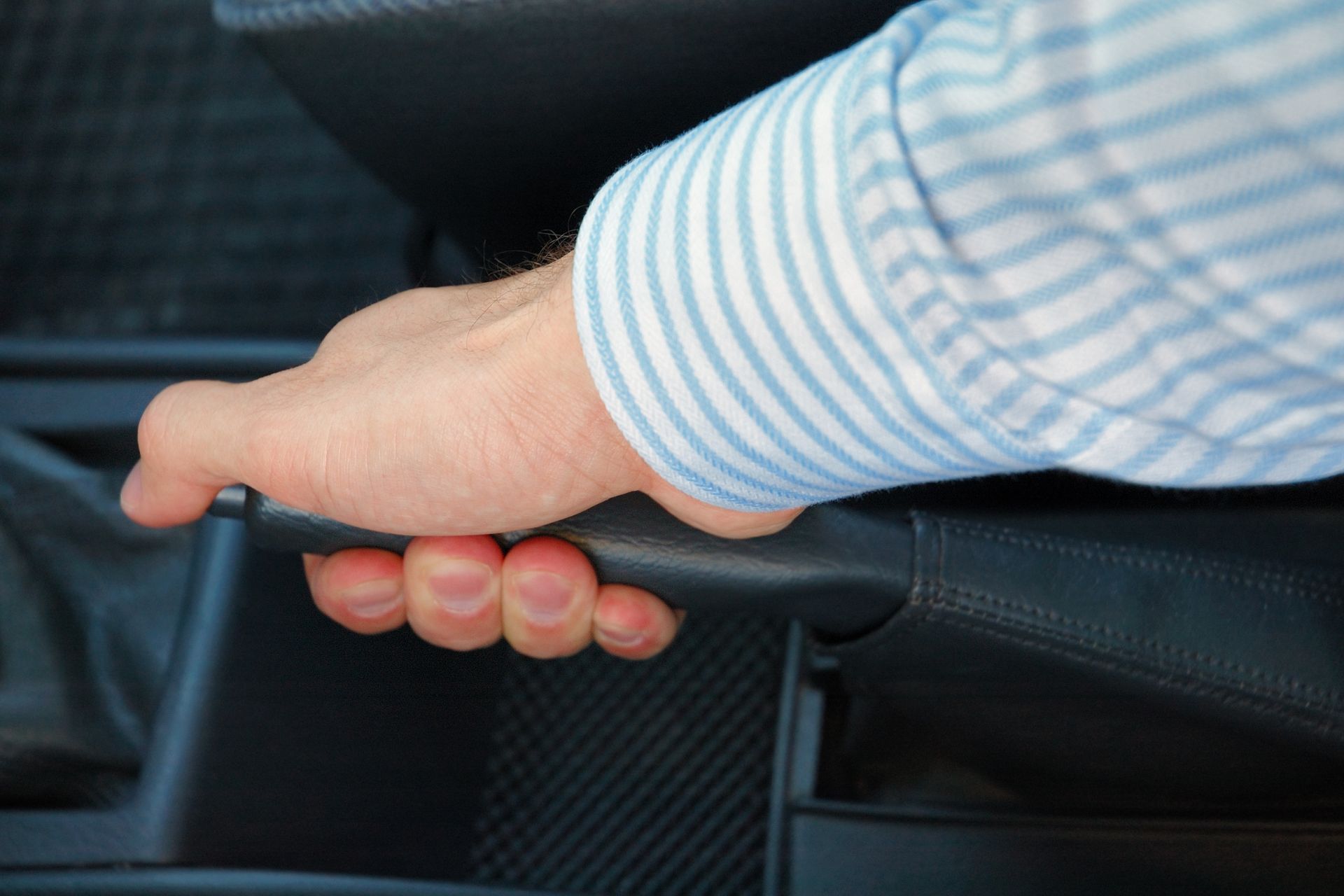Every time you’re getting your vehicle out of a parked position, there are several things to remember, such as the ignition, clutch, gear, side mirror, rearview mirror, signal, and maneuvering. Therefore, you may forget to disengage your handbrake before driving. Driving with a handbrake on is a common mistake that drivers make when they are in a hurry, inexperienced, or driving a vehicle they’re not used to.
Can a Car Move with Handbrake On?
Your vehicle can move with a handbrake on, especially if it is not fully engaged. Unless you push down or pull your handbrake until it can’t move, your vehicle’s engine can overpower it and move the wheels. As your vehicle moves with a handbrake engaged, you will notice that it feels sluggish and does not accelerate as much.
However, your vehicle’s drive system will determine whether it will operate with the handbrake engaged.
For instance, if your vehicle has a front-wheel drive system and the handbrake is on, the wheels will not turn. And, if your car moves even a few inches, the wheels will drag, indicating that your handbrake is engaged.
On the other hand, if your vehicle has a rear-wheel drive system and your handbrake is on, the engine may overpower the braking system. Your car will keep moving, and you will not notice the problem until it is too late. Driving long distances with the handbrake engaged is dangerous and could damage vital brake components.
Why Does a Car Move with a Handbrake On?
The main reason your car moves while the handbrake is engaged is because the handbrake is less powerful than a foot brake and offers less resistance when you attempt to drive off.
Every vehicle has two brakes; the foot brake, and the handbrake/parking brake. The foot brake is the most powerful since it is hydraulic powered. It is supposed to stop a moving vehicle. On the other hand, the handbrake keeps your vehicle stationary, which explains why it is weaker and only locks the rear wheels.
The handbrake is so much weaker that if you tried driving off a vehicle with a rear-wheel drive system, the engine would overpower the wheels. Therefore, the handbrake is rarely used to stop a fast-moving vehicle unless the foot brake has completely failed. The handbrake will only stop your car if you move at a low speed.
What Happens If You Forgot to Release the Handbrake While Driving?
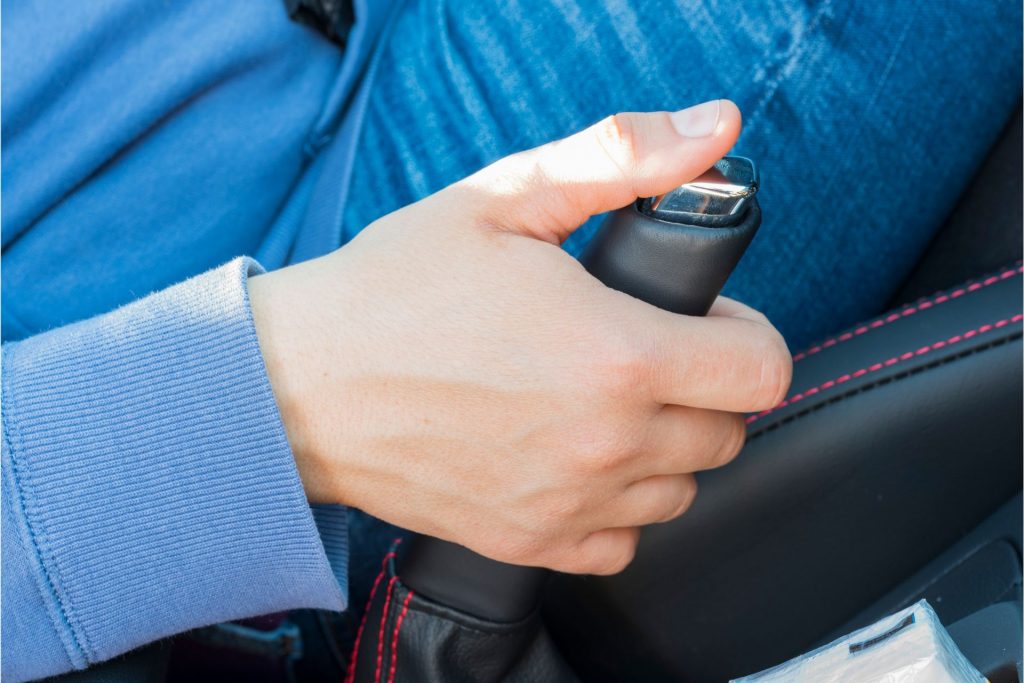
For instance, if your vehicle’s handbrake is only activated in one or two clicks and you drive off at a low speed, it will not cause substantial damage. This is because the handbrake will not fully lock the rear wheels, thus limiting the potential damage to your brake components.
Additionally, driving your vehicle with the handbrake slightly activated will make the car feel sluggish, prompting you to press the gas pedal even harder. If you notice that the handbrake is engaged in good time, only the brake pads will sustain slight damage.
Since the handbrakes on most modern vehicles only lock up the rear wheels, the brake pads on the front wheels will not be damaged.
It is also worth noting that most modern vehicles will make a sound to alert you when your handbrake is even slightly engaged, making it almost impossible to drive without noticing the issue.
As for the older models, a red light will appear on the dashboard without an accompanying sound to alert you that the handbrake is engaged. Inattentive drivers could miss the alert and drive with the handbrake engaged.
If your handbrake is fully engaged and you drive off your vehicle at high speed over a long distance, it will cause serious problems. Regardless of the kind of handbrake, driving off with a fully applied handbrake will cause the following problems:
Damage to brake pads and rotors
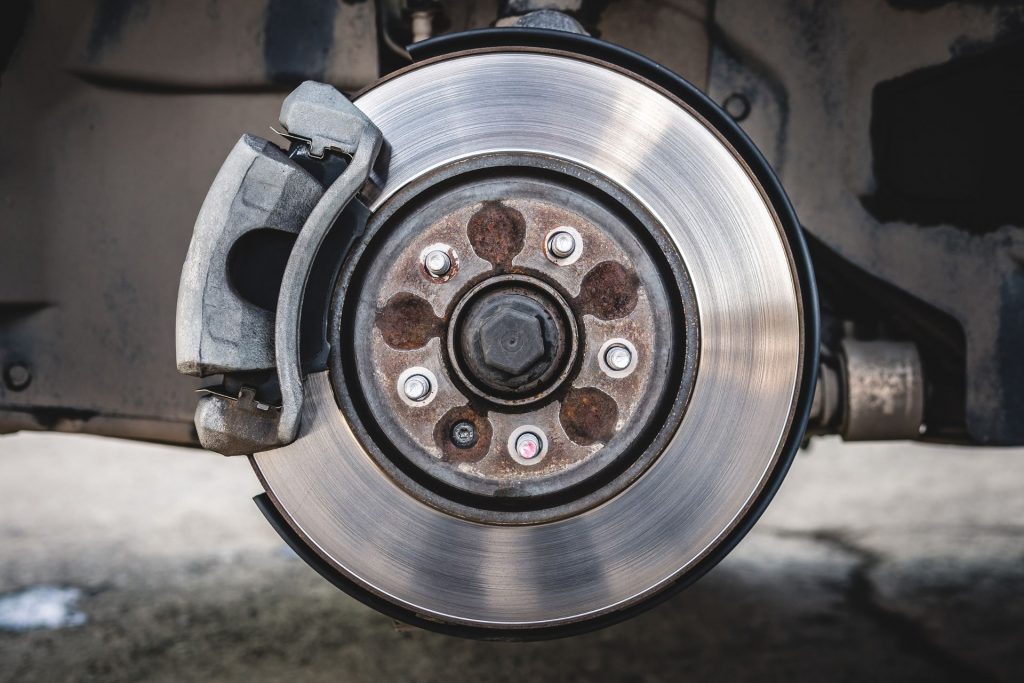
Driving your vehicle for a long time with the handbrake engaged will cause substantial damage to the brake pads and the rotors. Due to the excess heat and friction your vehicle’s braking system produces, these components will prematurely wear out and sustain damage.
This will cause your vehicle’s braking system to fail; it will feel spongy every time you press the brake pedal.
Over time, the glaze on the brake pedals will disappear. However, if you continue driving for long hours with the handbrake still engaged, the brake pads and rotors will wear out, becoming useless to your vehicle’s braking system.
Overheated brake fluid
If you drive with the handbrake on over a long distance at high speeds, the brake pads will overheat. The excess heat will move to the brake fluid, causing it to boil. While this is rare, when the brake fluid reaches its boiling point, it will make the brake pads slippery.
This means that every time you step your foot on the brake pedal to slow down the vehicle, the brake pads will slide. This makes it difficult to stop your car, which could lead to a severe accident. However, if you disengage the handbrake and avoid the mistake again, the brake pads will start working normally again after some time.
Damage to brake drum and disc
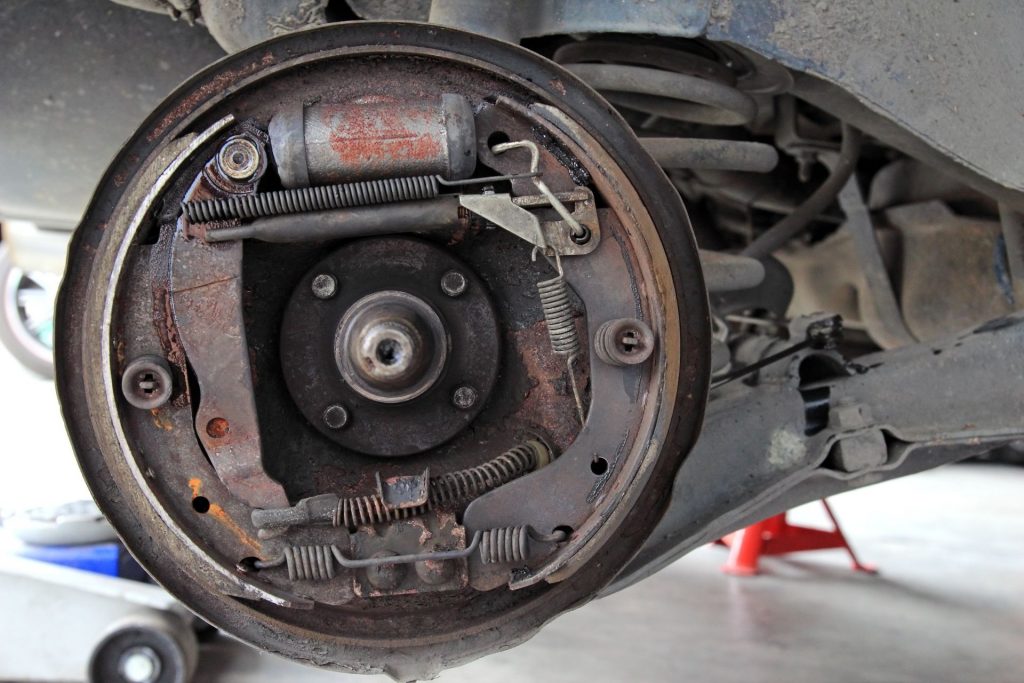
Driving for long with the handbrake on can easily crack the brake drum and disc. In some cases, an overheated brake system can also crack and separate the brake lining from the brake pads. When this happens, your vehicle will vibrate steadily, which can be dangerous, especially when driving on a busy highway.
Vehicle feels sluggish
Probably the most obvious result of driving your vehicle while the handbrake is on is that the car will feel sluggish. Your vehicle feels as if you are applying the brakes randomly, which is what most people do when driving on rough terrains or slippery roads. Since your vehicle will not accelerate, you must press the gas pedal harder, worsening the effects.
Damage to wheels and tires
In the unlikely event that your vehicle continues to move for several miles while the handbrake is fully engaged, the rear tires will wear out prematurely. Since the rear tires will be fully locked, they will not spin but skid off the road. The friction will force the tires to burn, and smoke will also be visible.
This will force the rear tires to wear out prematurely, and you will need tire balancing sooner than anticipated. Therefore, if you smell burning tires while driving, it may indicate that your handbrake is engaged and you should immediately pull over and call a professional mechanic.
Can You Use a Handbrake While Driving? When Should You Use It?
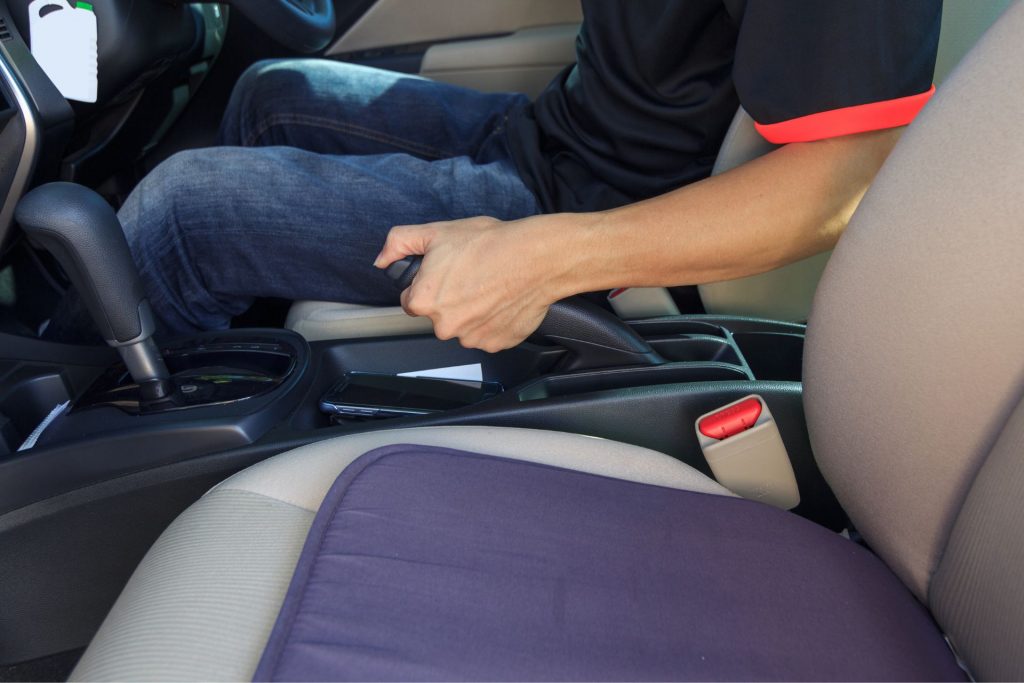
You should never use a handbrake while driving; it is dangerous. The handbrake locks up the rear wheels, so applying it while driving can force your vehicle to skid across the road and cause an accident.
The handbrake is for when you stop your vehicle or for emergency braking when the foot brake fails. For some vehicles, you apply the handbrake by pushing a button near the gearstick, while for others, it is a pulley lever.
The following are the ideal circumstances when you should use a handbrake:
When parking
Engaging the handbrake after parking is important, especially on a slanted road, uphill or downhill. Switching off the engine while your car is in gear is enough to keep the car stationary.
However, the vehicle can move if the shifter fails and the gears loosen up. Fully applying the handbrake and choking the wheels with some obstacles will keep the vehicle stationary until you return.
In emergencies
The handbrake is your last option when your vehicle’s braking system fails while driving. Since the handbrake is not as powerful as the foot brake, it will do just enough to slow down your vehicle in such situations.
However, you should know that applying the handbrake in an emergency could force the vehicle to rotate or skid off the road, especially if you are driving at high speed.
When stopped
If you stop at a traffic stop, pedestrian crossing, animal crossing, or intersection, it is best to shift to neutral and apply the handbrake. This ensures that your vehicle does not roll forward even if you are hit from behind. It will also let you rest for a moment on the road.
When maneuvering
You can apply the handbrake to perform a maneuver or drift in motorsport competition. However, your vehicle needs a steadier handbrake to perform such tricks, not the stock standard one.
How Long Can I Drive with the Handbrake On?
For instance, if you are driving at a low speed, you can go for several hours without inflicting any severe damage to your braking system. However, if you move at high speed, like 80 miles per hour, it will only take a couple of hours to encounter problems with your vehicle’s braking system.
How to Not Forget to Release the Handbrake
- Check the state of the handbrake as part of your routine before driving.
- Always check the dashboard for an indicator light before driving from a parking spot.
- Go for a vehicle with an automatic transmission since the handbrake automatically releases when you select Drive or Reverse.
What Happens When You Reverse Your Car with the Handbrake On?
Reversing your car with the handbrake on will not result in any significant damage, especially if your vehicle has a front-wheel drive system. However, reversing a car with a rear-wheel drive system at high speeds while the handbrake is on will cause some damage to the brake pads and shoes.

